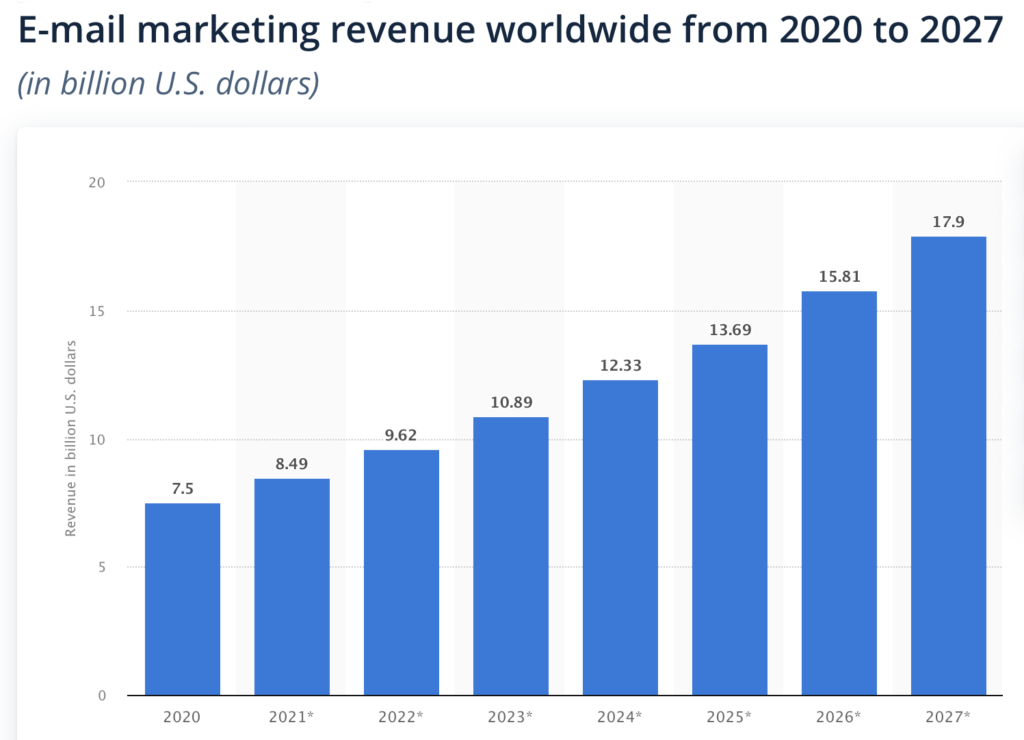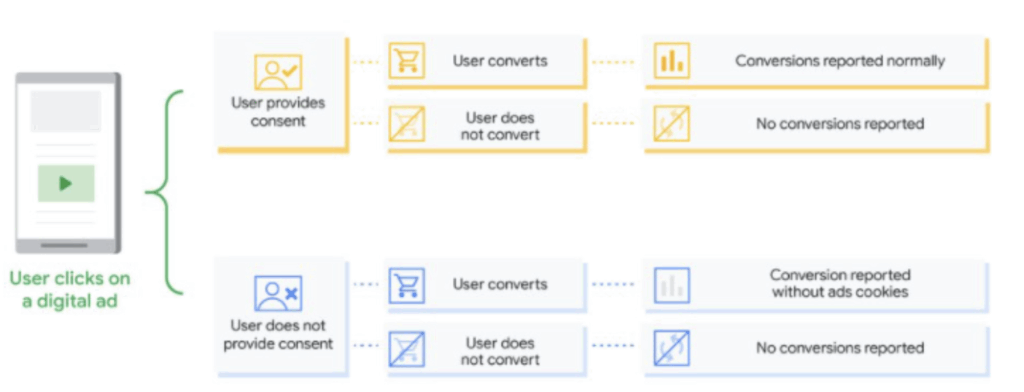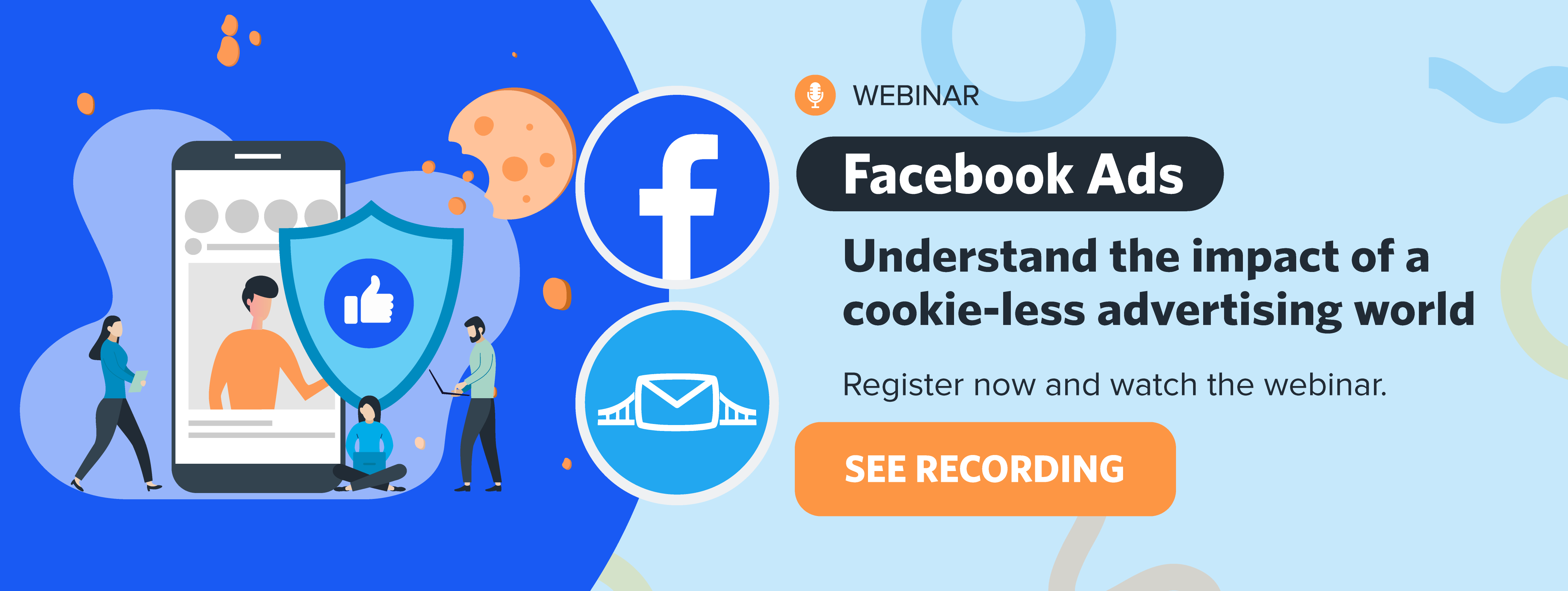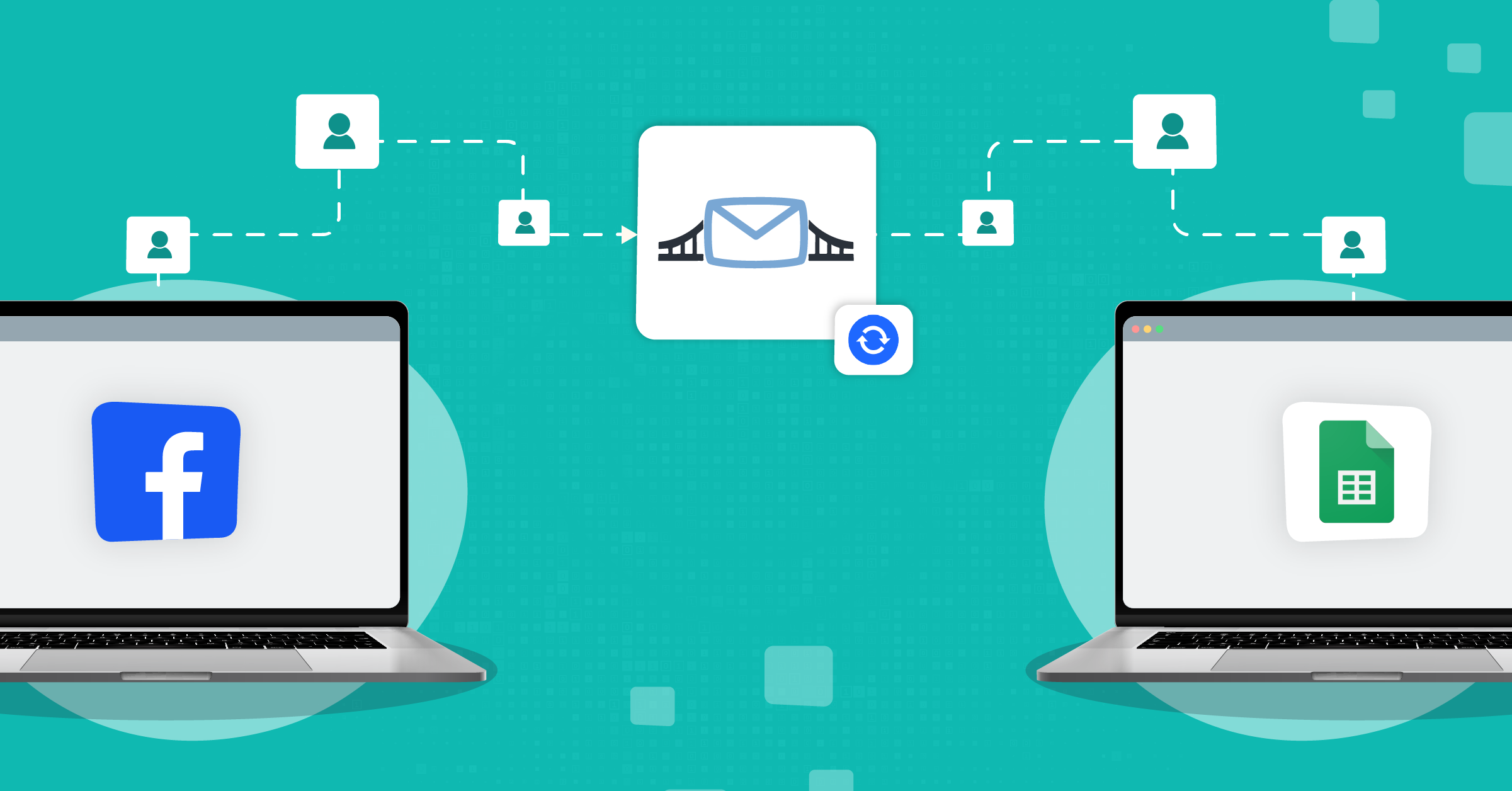
If you visit a website, chances are a familiar pop-up message greets you right away: “By using our site, you agree to our use of cookies to deliver a better site experience,” or “Cookies help us display personalized product recommendations and ensure you have a great shopping experience.” You can then accept or reject these cookies and continue browsing the site.
Of course, these cookies aren’t the same as the delicious ones you enjoy baking and eating. Still, they are a sweet marketing assistant if you are trying to target specific consumers based on their previous purchases, web pages they visited, and geolocation.
With many consumers’ data privacy concerns, however, websites can expect a future without cookies, and marketers may have a more difficult time reaching their target audience and increasing conversion rates, especially since key companies like Google and Apple are abandoning third-party cookies.
- What are cookies?
- The importance of cookies for marketing
- What are the different types of cookies?
- The impact of a cookieless future
- How to prepare for a cookieless future in advertising
- How to use AI to thrive in a cookieless future
- Cookieless future solutions and alternatives across platforms
- Final thoughts
So, how to combat a cookieless future? All hope is not lost.
Other methods for marketing to the right consumers exist and will be crucial in 2025 and beyond. Let’s explore what a cookieless future is and cookieless future solutions that can help your business continue to thrive.
One of these solutions is Facebook Conversions API.
What are cookies?
Cookies, in the digital sense, are pieces of text, or identifiers, that a website’s server can store on a visitor’s hard disk. Essentially, cookies allow sites to store information on a user’s machine and retrieve it later. This allows web pages to display faster for users because information like user preferences and browsing history are readily available.
The importance of cookies for marketing
Marketers can use cookies to their advantage by improving someone’s experience on a website. They can also use them to analyze each user’s data and provide targeted ads related to their search and purchasing history.
Cookies can also help website visitors. A shopper may add merchandise to their virtual shopping cart and then leave the site.
Thanks to cookies, the site knows which products the consumer placed in their cart and can hold them there until checkout (or send reminder emails to the consumer’s email address as a nudge to make the purchase).
If the visitor returns to that site in hopes of picking up where they left off, then they can enjoy a much more convenient shopping experience thanks to cookies.
As mentioned earlier, websites often ask users to accept or reject cookies. Some cookies, however, are essential to a website’s proper functioning.
For example, cookies used to store your language and currency preferences are relevant to many sites, allowing them to adapt their display to your unique user experience. If you rejected these cookies, you wouldn’t even be able to access the site.
What are the different types of cookies?
Similar to how chocolate chip cookies and oatmeal cookies are different but still cookies at their core, digital cookies take on different forms.
Types of cookies based on source
- First-party cookies are the ones set directly by the website when they visiting. The information gathered by first-party cookies is used to calculate page views, sessions, and the number of users. This information can be used by ad agencies and advertisers to target new potential customers.
- Third-party cookies are set by domains that the user does not visit directly. This happens when a website owner includes third-party elements on their website (such as chatbot software, social plugins, or advertisements).
Types of cookies based on purpose
- Essential cookies are placed automatically on your device whenever you access a website and they are necessary for a website to function correctly. These cookies remember your activities on a website, keep track of the items you interact with, and identify you as a user thanks to your login credentials.
- Non-essential cookies are all other cookies that do not meet the definition of essential cookies and can be placed on a device only if the user consents to them. These cookies are used to track user activity on a browser and customize a user’s ad experience on websites.
The impact of a cookieless future
What is a cookieless future? Basically, a future where cookies are no longer the norm. And when even big companies – such as Google and Apple – are taking measures to make that happen, you know it’s real.
On the one hand, Google cookieless future includes phasing out third-party cookies.
According to Justin Schuh, Google’s Director of Chrome Engineering, the reason behind this is that users are “demanding more privacy, including transparency, choice, and control over how their data is used.” He implied that Google was “evolving” because “the web ecosystem needed to meet these increasing demands.”
Since the iOS 14 release in early spring 2021, App Tracking Transparency (ATT) is Apple’s privacy framework that requires iOS app developers to ask for each user’s permission to track their activity or access their device’s IDFA (the Identifier for Advertisers) for advertising purposes.
As of 2025, surveys show that about 92% of people in the U.S. are concerned about their online data privacy. That number has been climbing.

In April 2025, Google scrapped its plan to remove third-party cookies from Chrome, but the move came after years of uncertainty across the industry.
About 70 percent of advertisers believed the change would slow digital advertising, and some publishers expected to lose up to 60 percent of their ad revenue.
Even with the decision reversed, many advertisers are still worried. Ongoing privacy updates and unclear tracking alternatives continue to raise serious concerns about the future of advertising.
So, what does a future without cookies look like? It looks like innovation. As a result of this big change, marketers and advertisers will have to resort to other ways to track users’ behavior.
How to prepare for a cookieless future in advertising
Fortunately, there are cookieless future solutions that marketers and advertisers can turn to. Here are a few of them to help you navigate a cookieless world.
Rely on first-party data
Marketers will have to collect data directly from consumers and rely on first-party data as much as possible. First-party data will be crucial to successfully personalize user experiences throughout the customer journey and maintain relevant, targeted advertising opportunities, while also ensuring data security.
First-party data is collected primarily from users who have already shown some sort of interest in your specific product, and then stored in your CRM or data warehouse. You can then use this data to target and re-engage these users with your ads.
LeadsBridge automates the connection between your CRM/DWH and top advertising platforms to help you automate your workflows and optimize your campaigns. Below you can find some of our most popular integrations.
To learn more about first-party data, take a look at this article: How to build a first-party data strategy.
Move to customer data platforms
Marketers are slowly moving away from using data management platforms (DMPs) and opting for customer data platforms (CDPs) instead.
This is a result of the fact that marketers are already investing more in first-party data.
DMPs primarily rely on third-party data, store data for shorter periods, and are unable to identify users, which limits their ability to create the most accurate audiences possible. CDPs collect and structure real-time data into individual, centralized customer profiles.
Rely on email marketing
As of right now, email marketing is still the easiest and fastest way to reach and get to know your customers. In fact, research shows that email marketing revenue worldwide is estimated to reach $17.9 billion by 2027.

Gain consent to contact
The easiest way to get what you want is to ask for it. Consent-based marketing is the new frontier of customer acquisition and the safest way to get in touch with new potential customers.
Asking for consumers’ consent before contacting them makes them feel safe, heard, and respected in their decision to share their personal info, and also protects advertisers against TCPA-related issues. A win-win situation.
ActiveProspect is a leading solution when it comes to providing proof of consent, making consent-based marketing the best channel for consumer acquisition.
If you’d like to learn more about consent-based marketing, read this article: Consent & permission-based marketing: definitions and benefits.
Cookieless tracking & retargeting
Another workaround that can help advertisers overcome the issue of third-party cookies phasing out is cookieless retargeting.
Basically, you track some user data on your own website that doesn’t require third-party tracking pixels or cookies, and then share that user data directly with Facebook – and other advertising platforms – without using the pixel. This way, you’re sending data from your server to Facebook, allowing for retargeting to still happen.
If you want to use a pixel to get a deeper insight into your customers, you can still use Meta’s Conversions API to track online and offline conversions.
To learn more about the Meta Pixel and Facebook Conversions API, check out this article: Everything you need to know about Facebook Conversions API.
LeadsBridge automates the connection between your CRM and advertising platforms to share data automatically and in real time. Take a look at some of our most popular integrations.
If you’d like to learn more about cookieless retargeting, take a look at these articles:
- What is cookieless retargeting & how deos it works?
- Cookieless tracking: The potential impact on the world of advertising
How to use AI to thrive in a cookieless future
With all the new tools and the way users interact with the web, marketers have to rethink how they reach and measure audiences. The good news is that AI is not here to create hindrances in your marketing funnel flows. Instead, it can be a helpful solution.
Here’s how you can start using AI to stay ahead, especially if you’re running lead-generation campaigns on Google:
1. More precise targeting without cookies
AI can analyze patterns in first-party data, like website behavior or past conversions, to build predictive audiences even without third-party tracking.
In Google Ads, this means relying more on tools like enhanced conversions, modeled audiences, and contextual targeting, all of which are getting smarter thanks to machine learning.
2. Faster optimization
AI can evaluate thousands of signals in real time far beyond what human teams can monitor manually. Whether you’re testing ad creatives or reallocating budgets, AI can help automate the decision-making process and improve results faster.
3. AI-based attribution
With third-party cookies going away, traditional tracking breaks down. AI-based attribution modeling uses machine learning to figure out which touchpoints are actually leading to conversions, even when user-level tracking is limited.
4. Lead qualification and Syncing
If you’re using Google lead form extensions, you want to attract leads, then use AI to score, route, or qualify leads the moment they arrive.
You can also track conversion performance more accurately by combining first-party data sync with Google’s conversion APIs and enhanced conversions.
Want to use AI to generate and convert more leads? Learn more here.
Cookieless future solutions and alternatives across platforms
While the workarounds we presented above are valid cookieless future solutions, they can only be temporary. But do not fret! Some permanent solutions and alternatives are already in the works.
Google cookieless future
In 2020, Google announced its intention to phase out support for third-party cookies in its Chrome browser by 2024 (which was called off).
However, Google then introduced the Privacy Sandbox initiative. A tool that aims to develop privacy-preserving alternatives to third-party cookies. Overall, Google’s cookieless future reflects a broader industry shift towards greater user privacy and data protection.
However, it also presents significant challenges and opportunities for advertisers, publishers, and users alike as they navigate the evolving digital landscape.
Google’s Enhanced Conversions tool
Meta isn’t the only platform adapting. Google offers Enhanced Conversions, which uses first-party data (like email or phone number) captured on your site and hashes it to securely match users when cookies fall short.
Facebook cookieless future
Facebook Conversions API (CAPI) is a tool provided by Facebook that allows advertisers to send data directly from their servers to Facebook’s servers, bypassing the need for browser-based tracking methods like the Facebook Pixel.
It works by sending HTTP requests containing event data, such as purchases or leads, directly to Facebook’s servers. Yet, browser-based tracking methods can sometimes be unreliable due to issues like ad blockers, cookie deletion, or browser restrictions.
By bypassing these mechanisms and sending data directly from the backend systems, the Conversions API offers more accurate and reliable tracking of conversions.
Overall, Facebook’s cookieless future offers a privacy-compliant, reliable, and cross-device tracking solution for measuring the effectiveness of advertising campaigns.
The cookieless future and the Facebook API
The big question is no longer what if cookies go away. It’s how do we still measure and optimize without them?
When browser-based tracking breaks down, you need a more direct line to your data. Server-side tracking provides that It lets you send data straight from your systems to your platforms, skipping the middleman (the browser).
That’s more control, fewer data losses, and better accuracy. And this is exactly why Facebook Conversions API matters.
Facebook Conversions API gives you a strategic advantage
The Facebook Conversions API lets you send web events and customer actions from your server directly to Facebook. It works alongside the Facebook Pixel but doesn’t depend on it.
Using this tool means you’re not relying on a pixel that can be blocked by ad blockers or limited by browser rules. Your event data stays more consistent, which is necessary for campaigns that rely on machine learning and retargeting.
And let’s be clear: Facebook’s algorithm needs accurate signals to optimize effectively. Conversions API keeps that learning loop alive, given that you have connected your database to Meta already.
You can do this using automated integrations:
Final thoughts
We have to come to terms with the fact that a cookieless future is upon us. On the one hand, we understand consumers’ need to safeguard their data and privacy, but on the other hand, we recognize the challenges advertisers face in effectively doing their job.
How to prepare then? Look for cookieless future solutions that do not require third-party cookies and rely solely on first-party cookies, hoping that a more permanent solution will emerge eventually.
In the meantime, LeadsBridge is here to help you navigate a cookieless world with automated, real-time integrations.
Check out all available integrations for Facebook Conversions API!



























